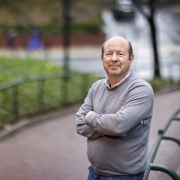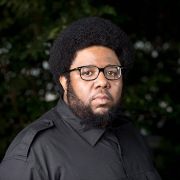Physicists Discover Why Drying Liquid Crystal Drops Leave Unusual ‘Coffee Rings’
In previous papers, Penn physicists investigated the “coffee ring effect,” the ring-shaped stain of particles left after drops of coffee evaporate. In one paper, they learned how to undo this effect by altering particle shape. Now, in a new paper published in Nature Communications, they have uncovered the complex and remarkably different behavior arising in a liquid crystal drop that is drying.
The research, carried out in collaboration with scientists at Lehigh University and Swarthmore College, reveals novel behavior characteristics of liquid crystals, fluids with aligned phases of constituent molecules. The formation of different phases during drying leads to dramatically different fluid movement and solid deposition and also provides insight needed for the control of drying solutions of macromolecules that occur in many dyes and pharmaceutical formulations.
Penn alumnus Zoey Davidson, now a postdoc at the Max Planck Institute for Intelligent Systems in Germany, had been experimenting with Sunset Yellow, a dye that gives Doritos and orange soft drinks their bright colors, when he accidentally spilled some of the material.
“I noticed that the spill pattern left behind by the drop was sort of similar to coffee-patterns we had studied before, but there were also differences,” Davidson says. “The drying drops had a macroscopically visible interior structure, too.”
Davidson, along with Arjun Yodh, director of the Laboratory for Research on the Structure of Matter and the James M. Skinner Professor of Science in the Department of Physics & Astronomy at Penn, and Peter Collings of Swarthmore, an adjunct professor, then decided to investigate this in a more controlled fashion. Penn physics Professor Randall Kamien, undergraduate alumnus Adam Gross, and postdocs Angel Martinez and Tim Still also contributed to the study. The group collaborated with Chao Zhou of Lehigh and his Ph.D. student Yongyang Huang.
Unlike the particles in a coffee drop, the liquid crystal drop they studied was a solution of Sunset Yellow molecules that spontaneously combine to form rod-like macromolecular assemblies, similar to how rod-like molecules order to form the liquid crystals used in LCDs.
Click here to read the full article.





